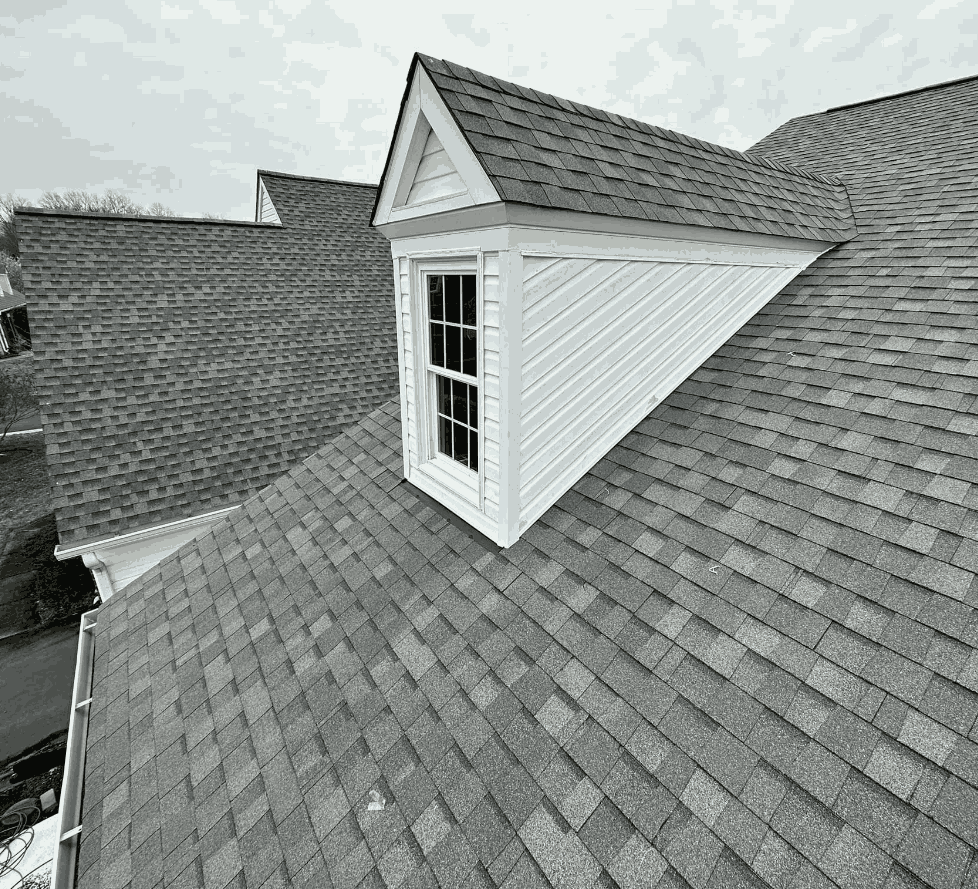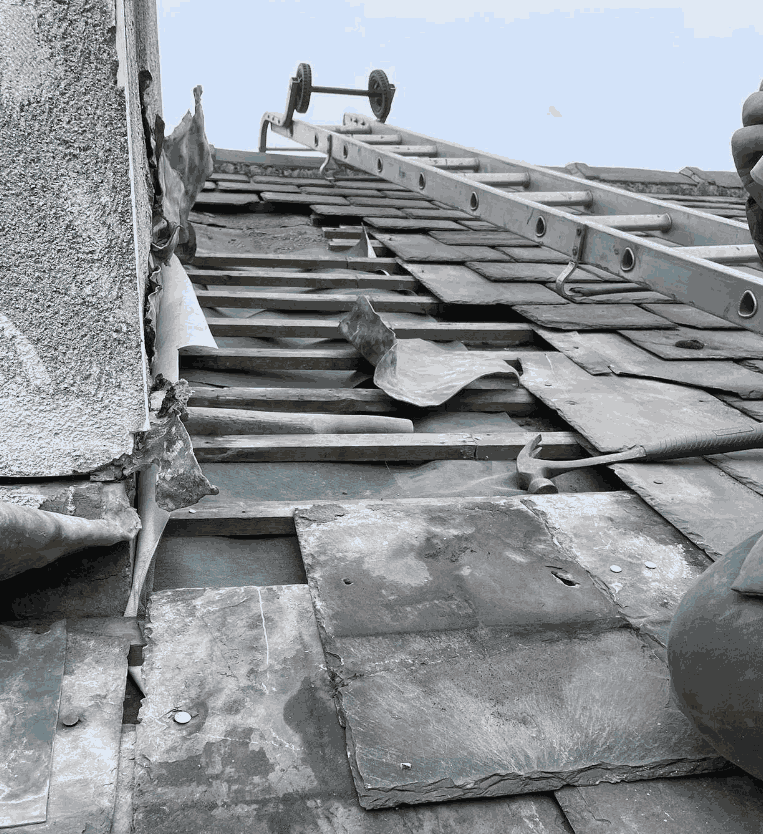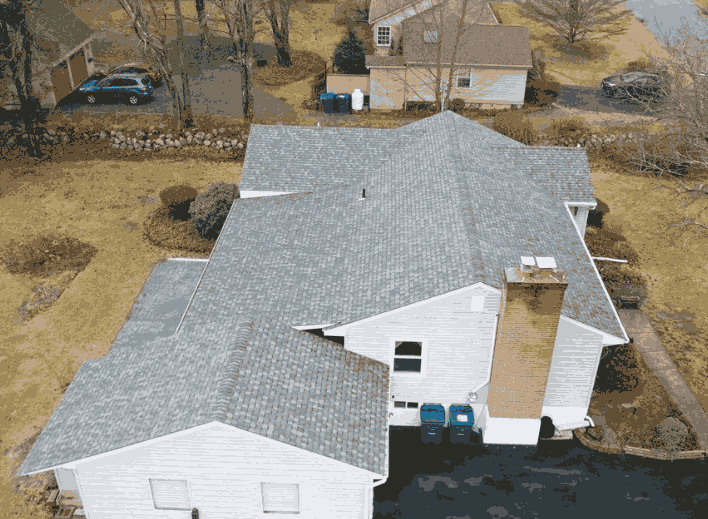The summer is a time for leisurely outdoor activities. It is also the time of year when your roof is most vulnerable to environmental factors that might shorten its longevity, such as heat, humidity, and UV rays. In this blog post, we’ll examine the three main ways that summer impacts your roof in more detail and go over some preventative measures you may take.
Increased Heat
Your roof may reach extremely high temperatures during the summer, especially if it is composed of asphalt shingles, which are known to absorb and hold heat. Your roof may experience a number of issues due to this heat, including:
Warping: As the temperature of your roof rises, the shingles may buckle, warp, or curl. Due to gaps between the shingles caused by this, your roof and interior may sustain water damage.
Cracking: Excessive heat can dry up and break your shingles, leaving them more prone to leaks and other problems. Water damage to your house might also result from cracked shingles.
Fading: Sun UV radiation can cause your shingles to fade, giving your roof a dreary appearance.
You can do the following to protect your roof from heat-related damage:
- Make sure your attic has enough ventilation so that hot air can escape. Your attic’s temperature may be regulated and heat from building up on your roof can be avoided with proper ventilation.
- To stop heat from entering your home, install insulation in the attic. Your home will stay cooler in the summer and warmer in the winter with the help of insulation.
- Choose heat-resistant roofing materials like metal or clay tiles. Certain substances reflect sunlight more effectively, dissipating heat.

Roof condensation in summer
High humidity throughout the summer months can result in condensation on your roof’s surface. This can happen when warm, humid air strikes a chilly roof surface, resulting in the formation of water droplets. This water can seep into the insulation, decking, and other parts of your roof, leading to damage and other issues.
You can take the following actions to avoid roof condensation in the summer:
- Make sure your attic is well-vented to let moisture out. It will be easier to control the humidity levels in your attic and avoid condensation with good ventilation.
- Place a vapor barrier in your attic to keep moisture out. To stop moisture from penetrating through the insulation and into the interior of your home, a vapor barrier is a substance that is positioned between those two surfaces.
- Make sure the insulation in your attic is both dry and in good shape. Insulation that is wet or damaged can hold moisture, which can lead to mold growth and other problems.
UV Damage
Your roof might sustain serious damage from the sun’s UV radiation over time. Your roof may become more susceptible to water leaks and other issues as a result of UV radiation damaging your shingles and causing them to crack, fade, and degrade. High levels of sunshine exposure are particularly conducive to UV damage.
You can take the following actions to guard against UV damage to your roof:
Choose roofing materials like metal or slate tiles that can withstand UV radiation. These substances are stronger and do a better job of reflecting sunlight.
Give your roof a UV-resistant coating. Your roof’s lifespan can be increased and the damaging rays of the sun can be reduced with a UV-resistant coating. Plan routine roof inspections to find and repair any UV damage. A qualified roofer can examine your roof for symptoms of UV deterioration, such as cracked or faded shingles and perform the required maintenance or repairs.

How hot does a roof get in the summer?
The location, material, color, and amount of sunlight that a roof receives are just a few of the variables that might affect its warmth throughout the summer.
On a hot summer day, the temperature on a roof can typically get to 150 degrees Fahrenheit or even more. This can alter the temperature within the building and make it uncomfortable for anyone who needs to access or work on the roof.
When compared to light-colored roofs, which reflect more sunlight, dark-colored roofs, like black or dark grey, tend to absorb more heat from the sun and can reach greater temperatures. It is also common knowledge that asphalt shingles and metal roofs absorb more heat than clay or slate roof tiles.
The quantity of insulation and ventilation in a building can also affect the temperature on a roof. The interior of the building can be kept cooler throughout the summer by having adequate insulation and ventilation, which can also help prevent the buildup of heat on the roof.
In the summer, it’s crucial to exercise caution when climbing onto or working on a hot roof to prevent heat-related ailments like heat exhaustion or heat stroke. To reduce the risk of heat-related illnesses, it is advised to use protective gear and schedule your job during cooler times of the day.
Conclusion
Your roof may experience a number of problems throughout the summer, but with the right maintenance and attention, you can limit damage and make sure that your roof lasts for many years. Here are the three main ways that summer affects your roof, in brief:
High Heat: Excessive heat can cause your shingles to stretch, fracture, and fade, which can result in water damage and other problems.
Condensation: Excessive humidity can result in condensation building up on your roof’s surface, which can cause decay and other issues.
UV Damage: Over time, the sun’s UV rays can seriously harm your roof by causing cracking, fading, and disintegration.
Making sure your attic is properly ventilated and insulated, selecting roofing materials that are heat- and UV-resistant and scheduling routine roof inspections are all vital precautions to take in order to safeguard your roof from these problems.
At JR Roofing and Gutters, we recognize the value of keeping a strong, long-lasting roof, particularly in the summer. Our team of knowledgeable roofers is here to assist you if you’re having any problems with your roof or would like to arrange for a professional inspection. To find out more, call us right away.
